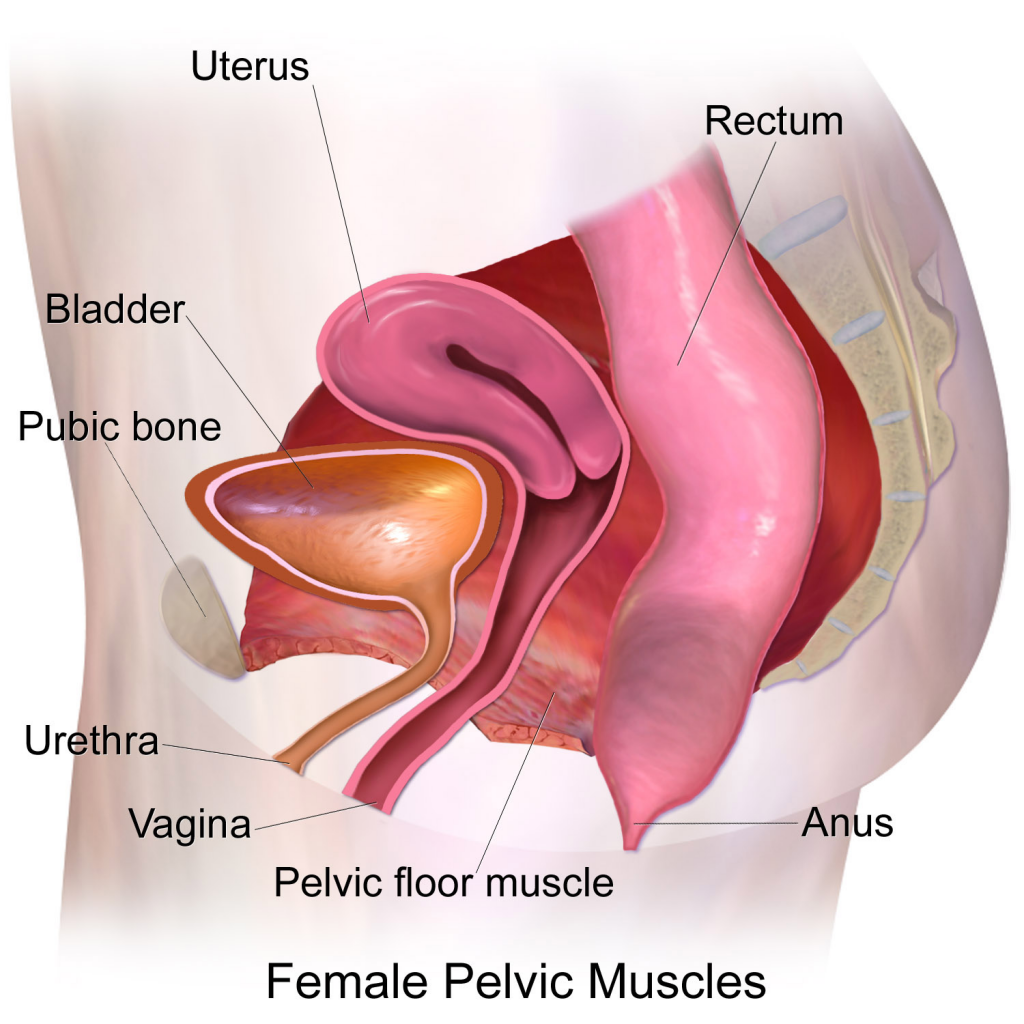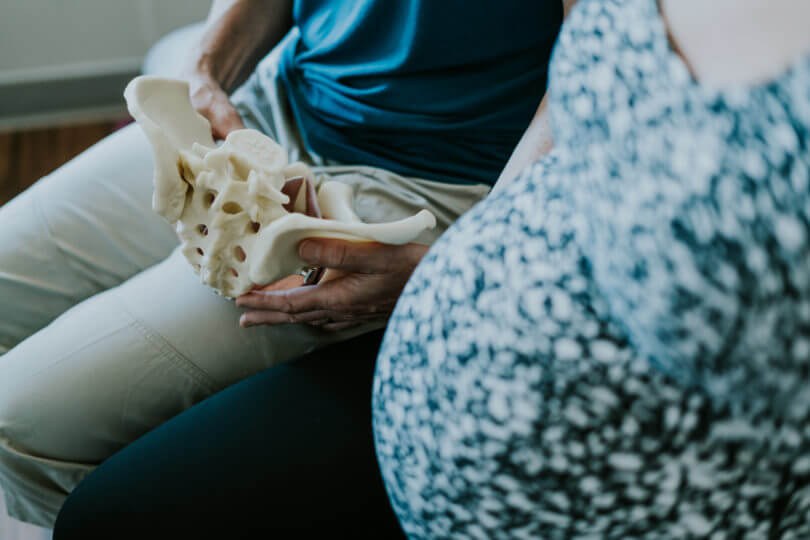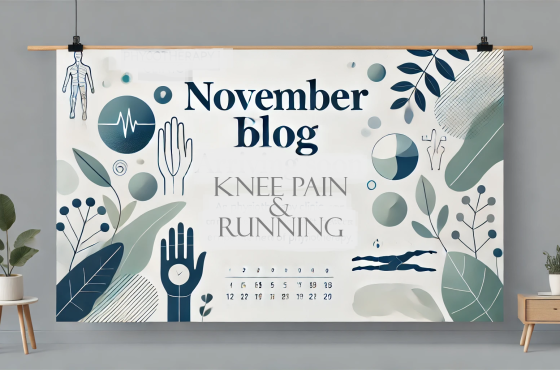Pelvic Floor Dysfunction
What is pelvic floor dysfunction?
A pelvic floor is a group of muscles connecting the pubic bone, coccyx (tail bone), and pelvis. This group of muscles has three functions:
1. Supportive- supports the bladder and urethra, the rectum, and in women, the vagina and uterus, and in men, the prostate.
2. Sphincteric- these muscles help to maintain continence (control) of urine and stool
3. Sexual – Contractions of the pelvic floor muscles increase the sexual response in both men and women.

Pelvic floor dysfunction occurs when this group of muscles is not contracting appropriately for the action required.
The pelvic floor muscles are part of the ‘Core’ that controls vertebral and pelvic alignment during motion. The other parts of the core are the deep abdominal wall, deep back muscles, and the diaphragm. Any condition affecting the ability of these core muscles to function correctly can impact pelvic floor function e.g. lower back, SI joint pain, abdominal surgery, childbirth- including diastasis of recti, and respiratory conditions.
Symptoms of pelvic floor dysfunction
Here are some of the symptoms you may experience if your pelvic floor is not functioning optimally.
- INCONTINENCE of urine and/or stool. Reduced control of the pelvic floor muscles can result in the involuntary loss of urine, stool, or gas. E.g. when coughing, sneezing, or running in downtown Vancouver.
- PROLAPSE. The bladder, uterus, or rectum protrudes into the vagina or presses on the vaginal wall. Symptoms include heaviness/dragging in the vagina and sometimes incontinence. Some cases require surgery but physiotherapy can often alleviate symptoms.
- VULVA PAIN. Pain in the vulva area can be localized or radiating. Vulva pain can be associated with interstitial cystitis/bladder pain syndrome, irritable bowel disorder, and childbirth.
- PELVIC, RECTAL, COCCYGEAL PAIN. This may be due to pregnancy, childbirth, a fall onto the tailbone, or chronic pelvic pain syndrome.
Physiotherapy
Treating pelvic floor dysfunction is not just “practicing kegel contractions”. Many people are already holding their pelvic floor muscles tense and will benefit from learning how to relax the muscles first.
If you experience pain with sexual activity, have a constant urge to urinate (e.g. know where all the bathrooms are in downtown Vancouver), or experience pain when emptying your bowels, then you may be holding tension in your pelvic floor muscles.

After careful assessment a treatment plan will be created by your physio and may include:
- Exercises to retrain the function of the pelvic floor muscles and the ‘core’. This may be strengthening weak muscles or learning to ‘downplay’ overactive (tense) muscles
- Instruction in postural correction and exercises related to leisure and work activities; and to improve bladder and bowel function
- Manual therapy to restore spinal and pelvic mobility. Also, hands-on techniques facilitate the relaxation of tense muscles.
- Real-time ultrasound imaging- to evaluate core muscles and for biofeedback therapy.
- Advise on behavioral changes to alleviate symptoms.
Located in downtown Vancouver, all our therapists are ready and willing to help with your physiotherapy needs. Our Lynda Lawrence has a special interest in Women’s Health and has additional training in the treatment of pelvic floor dysfunction for both women and men. Book Today!




